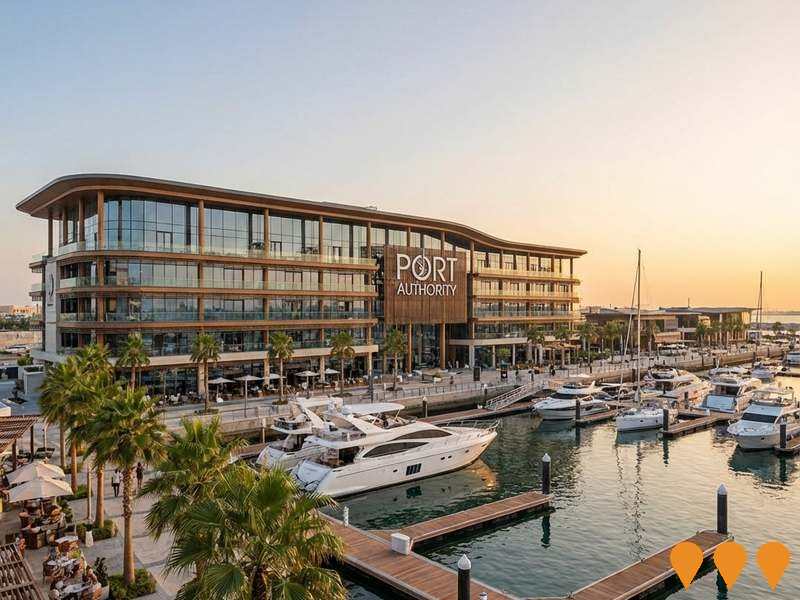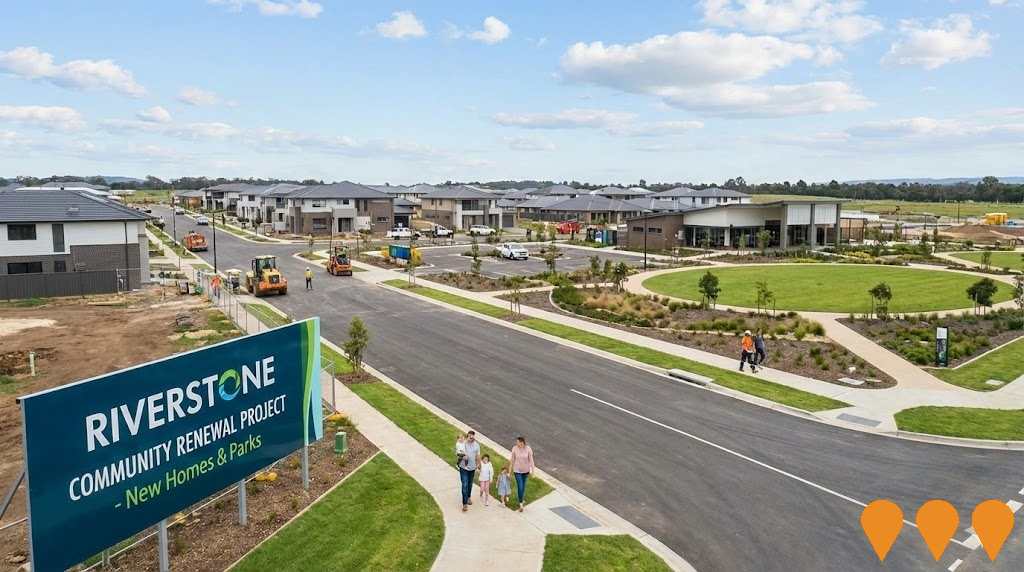Chart Color Schemes
est. as @ -- *
ABS ERP | -- people | --
2021 Census | -- people
Sales Activity
Curious about local property values? Filter the chart to assess the volume and appreciation (including resales) trends and regional comparisons, or scroll to the map below view this information at an individual property level.
Find a Recent Sale
Sales Detail
Population
Ballina Surrounds lies within the top quartile of areas nationally for population growth performance according to AreaSearch analysis of recent, and medium to long-term trends
Ballina Surrounds' population, as of August 2025, is approximately 19,165. This figure represents a growth of 838 people since the 2021 Census, which recorded a population of 18,327. The increase was inferred from ABS's estimated resident population of 19,078 in June 2024 and an additional 420 validated new addresses since the Census date. This results in a population density ratio of 47 persons per square kilometer. Ballina Surrounds' growth rate of 4.6% since the 2021 census exceeds the SA4 region's growth rate of 3.2%. Interstate migration contributed approximately 48.0% to this growth, with overseas migration and natural growth also playing positive roles.
AreaSearch uses ABS/Geoscience Australia projections for each SA2 area, released in 2024 with a base year of 2022. For areas not covered by this data, NSW State Government's SA2 level projections, released in 2022 with a base year of 2021, are utilized. Growth rates by age group from these aggregations are applied to all areas for the years 2032 to 2041. By 2041, Ballina Surrounds' population is projected to increase by 4,940 persons, marking a total gain of 25.3% over the 17-year period.
Frequently Asked Questions - Population
Development
AreaSearch assessment of residential development activity positions Ballina Surrounds among the top 25% of areas assessed nationwide
Ballina Surrounds has seen approximately 121 dwellings granted development approval annually over the past five financial years, totalling 609 homes. As of FY-26, 20 approvals have been recorded. On average, 1.9 new residents per year per dwelling constructed were added between FY-21 and FY-25. This indicates a balanced supply and demand market, supporting stable conditions.
The average construction cost value of new dwellings is $561,000, which is higher than regional norms, reflecting quality-focused development. In the current financial year, $12.1 million in commercial approvals have been registered, demonstrating moderate levels of commercial development. Compared to the Rest of NSW, Ballina Surrounds shows moderately higher development activity, with 11.0% above the regional average per person over the five-year period. This balance supports buyer choice and current property values.
New development consists of 65.0% standalone homes and 35.0% medium and high-density housing, expanding the range of medium-density options to create a mix of opportunities across price brackets. This shows a considerable change from the current housing mix, which is currently 86.0% houses. The area reflects low density with around 193 people per approval. Future projections indicate Ballina Surrounds will add approximately 4,849 residents by 2041. Construction is maintaining a reasonable pace with projected growth, although buyers may encounter growing competition as population increases.
Frequently Asked Questions - Development
Infrastructure
Ballina Surrounds has strong levels of nearby infrastructure activity, ranking in the top 40% nationally
The performance of an area can significantly be influenced by changes in local infrastructure. AreaSearch has identified a total of 47 projects that may impact this area. Notable ones include Alstonville Cultural Centre Upgrade, Alstonville Medical Centre at 12 Commercial Road, Alstonville Wastewater Treatment Plant Upgrade, and the Mixed-Use Development at 104 Main Street. The following list details those likely to be most relevant.
Professional plan users can use the search below to filter and access additional projects.
INFRASTRUCTURE SEARCH
 Denotes AI-based impression for illustrative purposes only, not to be taken as definitive under any circumstances. Please follow links and conduct other investigations from the project's source for actual imagery. Developers and project owners wishing us to use original imagery please Contact Us and we will do so.
Denotes AI-based impression for illustrative purposes only, not to be taken as definitive under any circumstances. Please follow links and conduct other investigations from the project's source for actual imagery. Developers and project owners wishing us to use original imagery please Contact Us and we will do so.
Frequently Asked Questions - Infrastructure
Alstonville Medical Centre - 12 Commercial Road
Two storey medical centre with ground floor parking, associated infrastructure and landscaping, and a new business identification sign. The DA is before the Northern Regional Planning Panel (PPSNTH-384) with a declared capital investment value of about $5.45m.
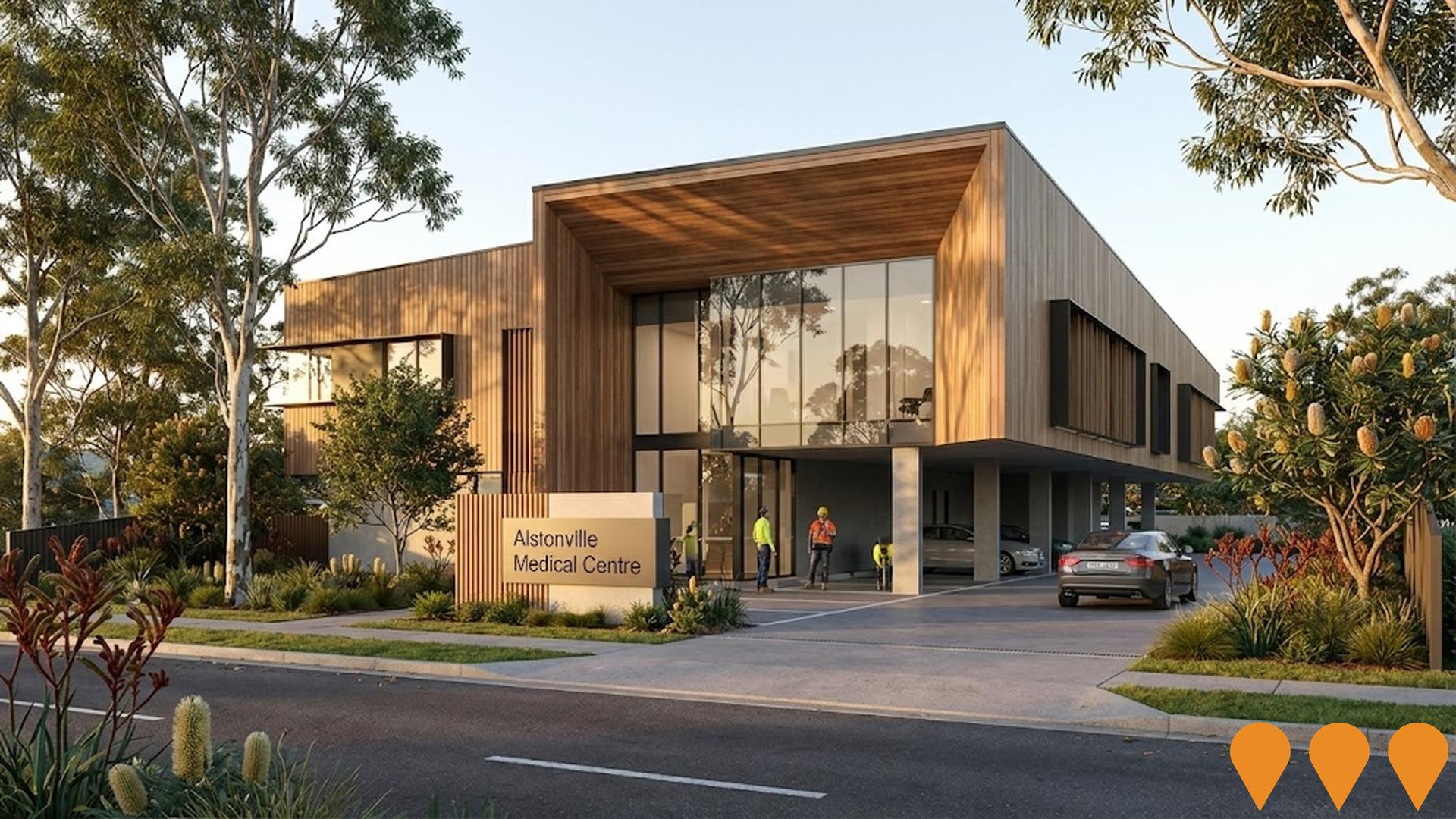
The Interchange
DA-approved large format retail and industrial precinct (approx. 29,289 sqm GFA across four buildings) on an 8.26 ha site with ~547 m frontage to the Pacific Highway at the Pacific/Bruxner interchange.
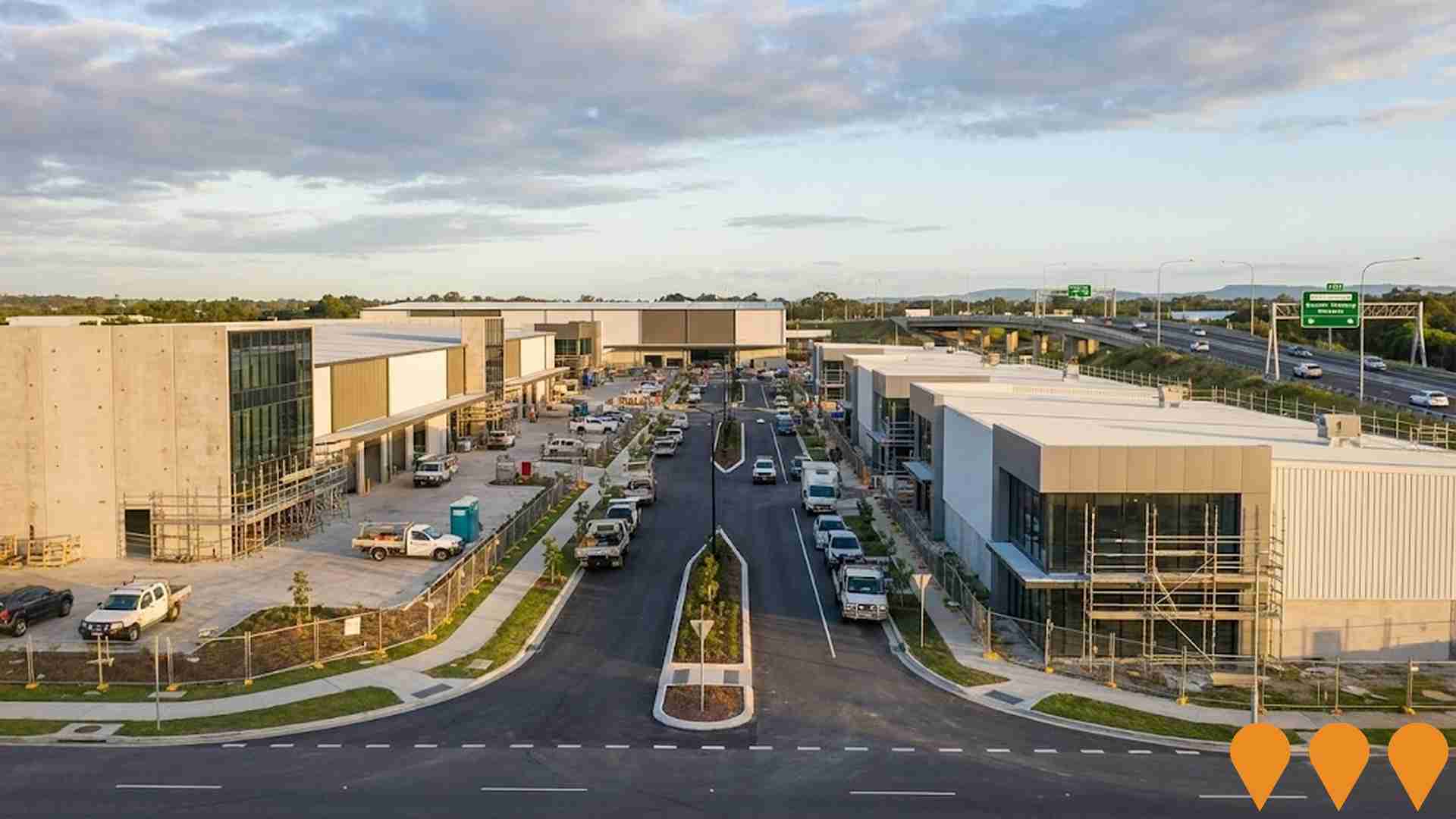
Alstonville Cultural Centre Upgrade
Major $16 million refurbishment and upgrade of the Alstonville Cultural Centre (built early 1980s). Includes a new two-storey library annex expanding from 145mý to 756mý (with children's zone, study areas, meeting rooms, lift access and flexible community spaces), expanded sports hall, renovated multi-purpose hall with air conditioning, new roof with solar PV system, upgraded amenities, new entrance foyer, servery, office, reception, kitchenette, off-street access and landscaping. The facility serves as a combined library, sports, recreation and community hub.
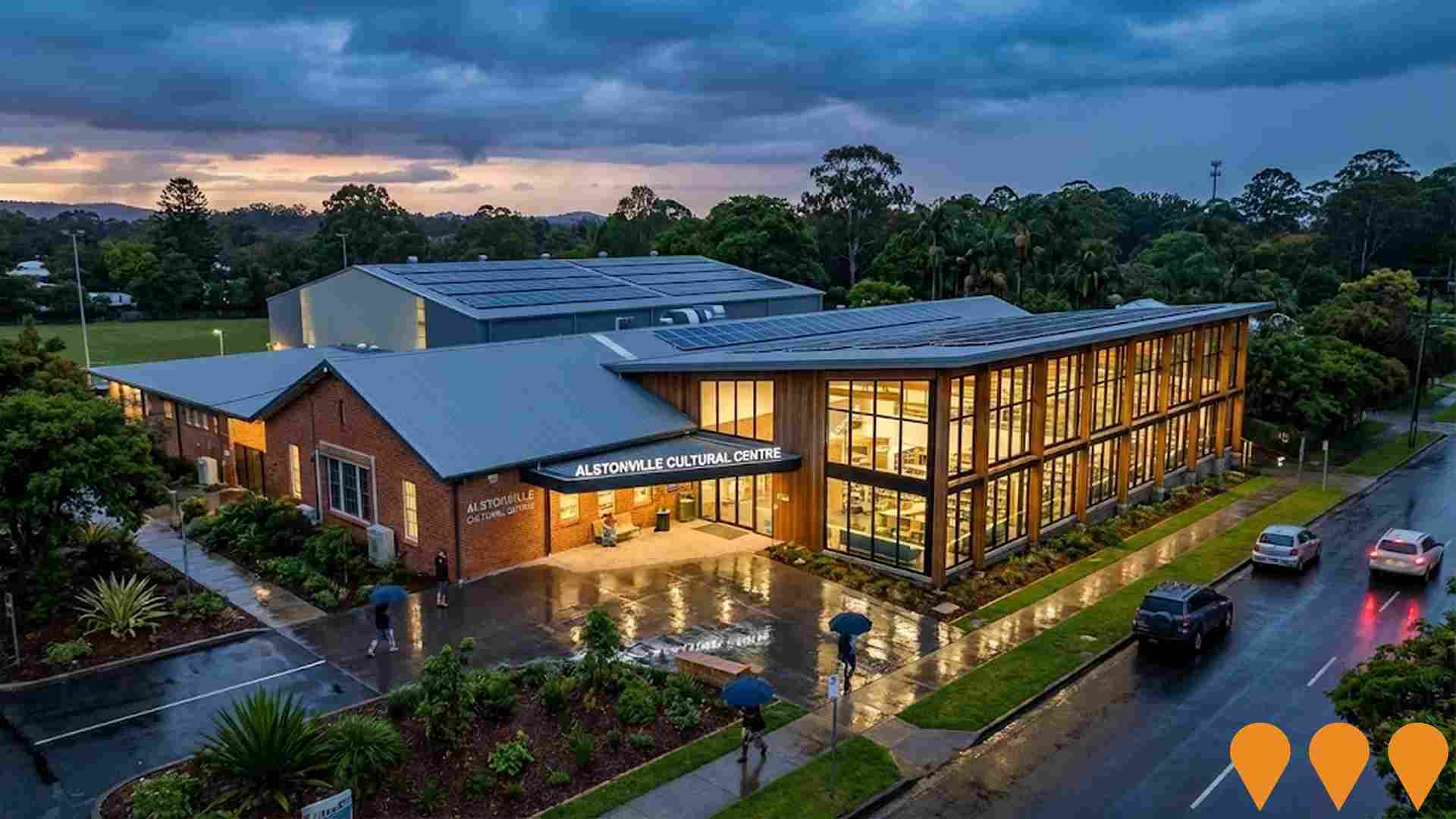
Solhaven
Solhaven is an impact-led micro-village blending residences, creative suites, curated retail, and diverse wellness options to foster creativity, connection, and community living in the Northern Rivers.
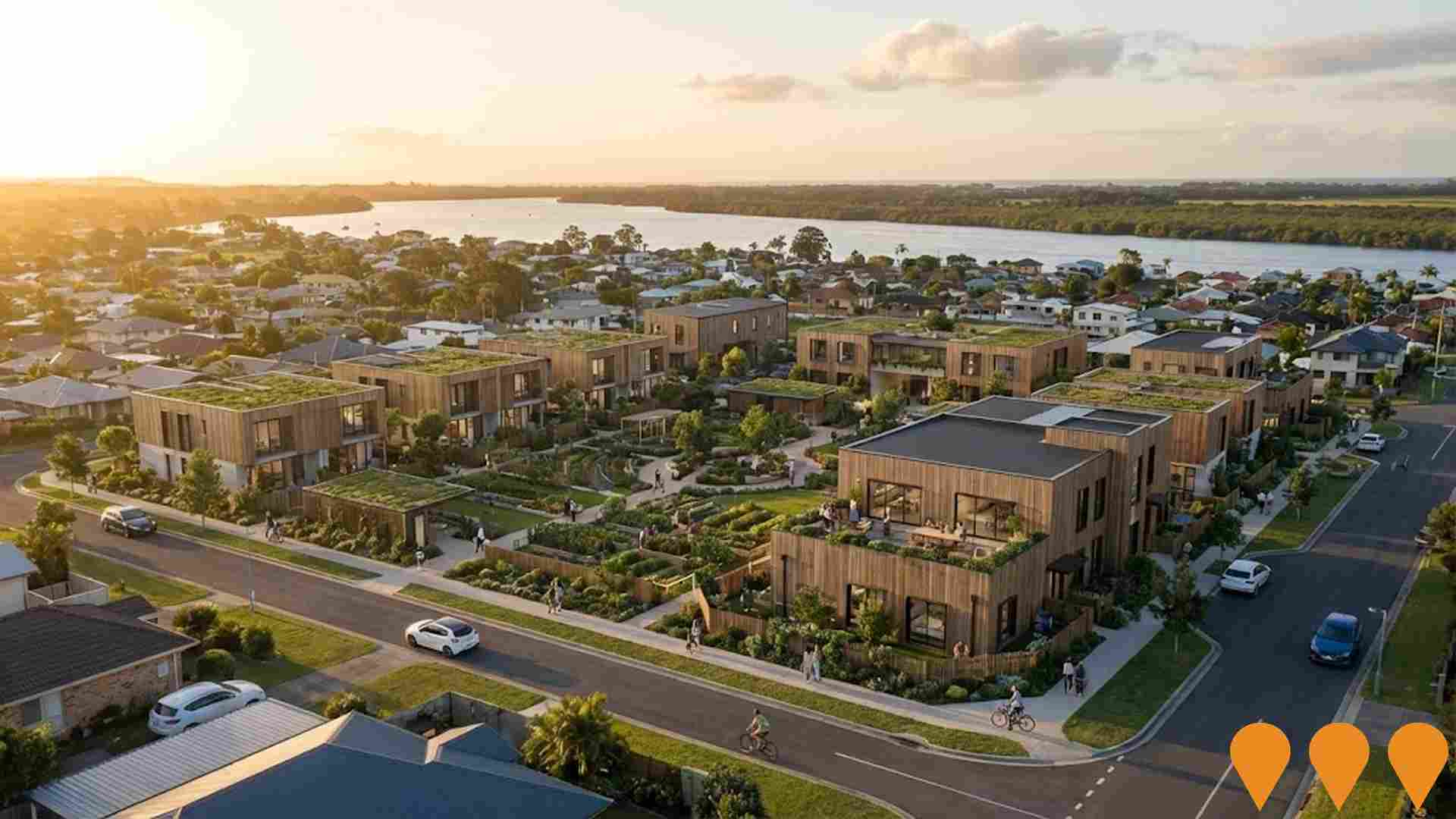
Alstonville Wastewater Treatment Plant Upgrade
Upgrades to the Alstonville Wastewater Treatment Plant as part of Ballina Shire Council's $11 million investment in wastewater infrastructure for the 2025/26 financial year, including enhancements to support community and environmental needs.
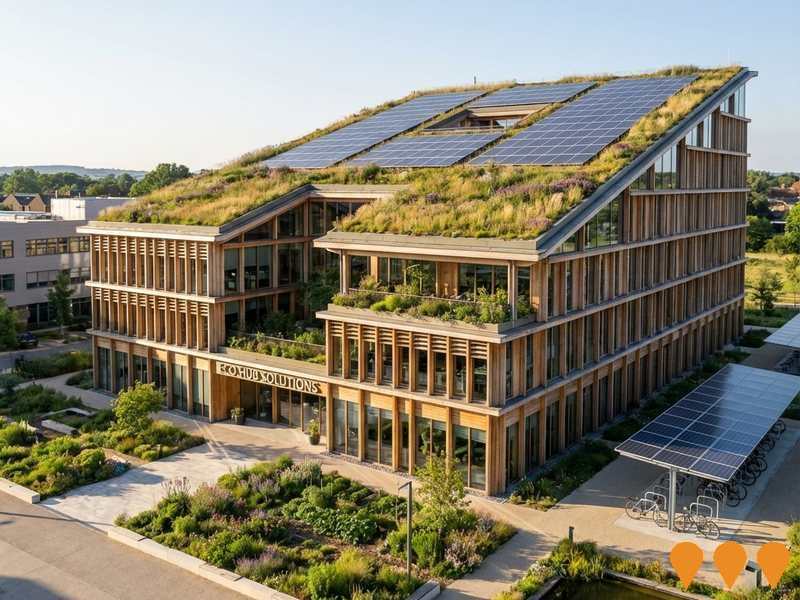
Wollongbar Public Preschool
New public preschool co-located with Wollongbar Public School, providing up to 40 places per day for local children. Includes two preschool rooms, outdoor play areas, administration area, amenities, staff kitchen, and storage. Offers a high-quality play-based educational program.
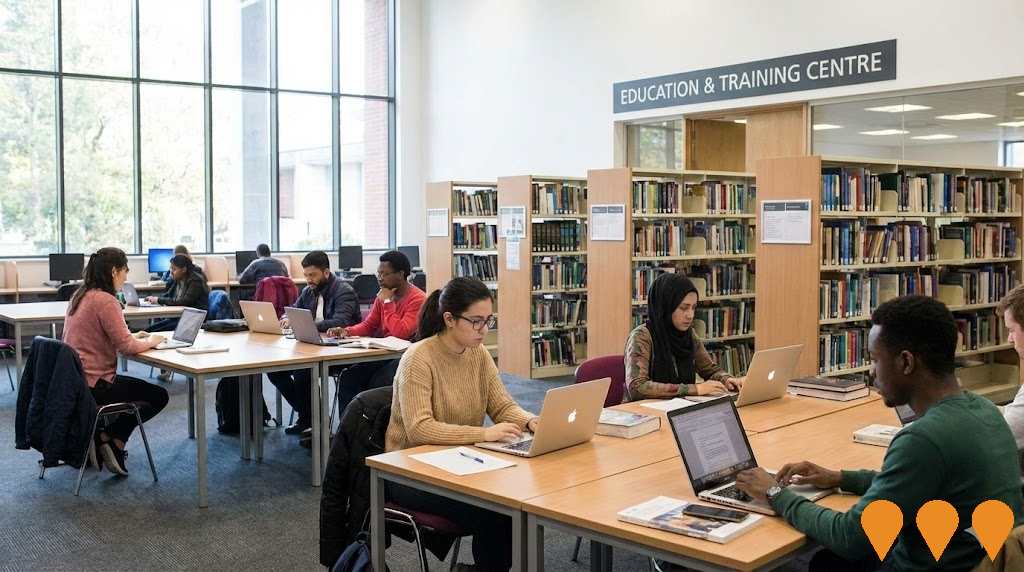
Wollongbar Housing Project
Medium-density housing development on Council-owned land featuring 1-4 bedroom dwellings. Stage 1 delivers 15 dwellings on 5 lots to improve housing diversity and affordability.

Teven Road Residential Development
18.1Ha prime development land opportunity suitable for Over 50s Land Lease Community housing or family homes on flood-free land. Mixed zoning of R2 Low Density Residential and DM Deferred Matter, adjoining R2 and R3 zones, with council-identified future residential rezoning overlay.

Employment
The labour market in Ballina Surrounds shows considerable strength compared to most other Australian regions
Ballina Surrounds has a skilled workforce with an unemployment rate of 2.1% as of June 2025. It has 9,081 residents in work, with an unemployment rate of 1.6 percentage points lower than the Rest of NSW's rate of 3.7%.
Workforce participation is at 59.4%, compared to 56.4% in the Rest of NSW. Employment is concentrated in health care & social assistance, retail trade, and education & training. The area has a strong specialization in agriculture, forestry & fishing, with an employment share 1.4 times the regional level. However, public administration & safety is under-represented, at 5.3% compared to 7.5% in the Rest of NSW.
Over the year to June 2025, labour force levels decreased by 4.8%, with a 4.4% employment decline, causing unemployment to fall by 0.4 percentage points. In contrast, the Rest of NSW experienced an employment decline of 0.1% and labour force growth of 0.3%, with a 0.4 percentage point rise in unemployment. According to Jobs and Skills Australia's national employment forecasts from May 2025, national employment is projected to expand by 6.6% over five years and 13.7% over ten years. Applying these projections to Ballina Surrounds' employment mix suggests local growth of approximately 6.5%% over five years and 13.6% over ten years.
Frequently Asked Questions - Employment
Income
Income levels sit below national averages according to AreaSearch assessment
Ballina Surrounds' median income among taxpayers was $45,426 in financial year 2022. The average income stood at $60,357 during the same period. This compares to figures for Rest of NSW's median income of $49,459 and average income of $62,998 respectively. Based on a Wage Price Index growth rate of 12.61% since financial year 2022, current estimates suggest the median income would be approximately $51,154 and the average income would be around $67,968 as of September 2025. According to Census 2021 income data, household, family, and personal incomes in Ballina Surrounds all rank modestly, between the 38th and 39th percentiles. The earnings profile shows that 32.2% of individuals earn within the $1,500 - 2,999 range (6,171 individuals), which is similar to regional levels where 29.9% occupy this earnings band. After housing costs, 84.9% of income remains for other expenses. The area's SEIFA income ranking places it in the 6th decile.
Frequently Asked Questions - Income
Housing
Ballina Surrounds is characterized by a predominantly suburban housing profile, with above-average rates of outright home ownership
Ballina Surrounds' dwelling structure in 2016 comprised 86.5% houses and 13.5% other dwellings, compared to Non-Metro NSW's 75.1% houses and 24.9% other dwellings. Home ownership in Ballina Surrounds was 44.6%, with mortgaged dwellings at 32.9% and rented ones at 22.5%. The median monthly mortgage repayment was $1,900, below Non-Metro NSW's average of $1,980. Median weekly rent in Ballina Surrounds was $410, compared to Non-Metro NSW's $450. Nationally, Ballina Surrounds' median monthly mortgage repayment was higher at $1,900 than the Australian average of $1,863, while median weekly rent was $410, exceeding the national figure of $375.
Frequently Asked Questions - Housing
Household Composition
Ballina Surrounds has a typical household mix, with a higher-than-average median household size
Family households constitute 73.9% of all households, including 29.7% couples with children, 32.0% couples without children, and 11.4% single parent families. Non-family households comprise the remaining 26.1%, with lone person households at 23.0% and group households making up 3.0%. The median household size is 2.5 people, which is larger than the Rest of NSW average of 2.4.
Frequently Asked Questions - Households
Local Schools & Education
Educational attainment in Ballina Surrounds aligns closely with national averages, showing typical qualification patterns and performance metrics
Educational qualifications in Ballina Surrounds lag behind regional benchmarks, with 26.1% of residents aged 15+ holding university degrees compared to the NSW average of 32.2%. This gap indicates potential for educational development and skills enhancement. Bachelor degrees are most common at 18.4%, followed by postgraduate qualifications (4.8%) and graduate diplomas (2.9%). Trade and technical skills are prominent, with 39.3% of residents aged 15+ holding vocational credentials – advanced diplomas account for 11.8% and certificates for 27.5%.
Educational participation is high, with 27.1% of residents currently enrolled in formal education. This includes 10.1% in primary education, 8.2% in secondary education, and 3.3% pursuing tertiary education. As of the 2016 Census, 11 schools serve a total of 1,630 students in Ballina Surrounds. The area has typical Australian school conditions (ICSEA: 987) with balanced educational opportunities. Education provision is balanced with 10 primary and 1 secondary school serving distinct age groups. School places per 100 residents (8.5) are below the regional average (13.2), suggesting some students may attend schools in adjacent areas.
Frequently Asked Questions - Education
Schools Detail
Nearby Services & Amenities
Transport
Transport servicing is low compared to other areas nationally based on assessment of service frequency, route connectivity and accessibility
Ballina Surrounds has 621 active public transport stops. These include a mix of train and bus services. There are 69 individual routes operating in total, providing 888 weekly passenger trips combined.
The area's transport accessibility is rated as excellent, with residents typically located 143 meters from the nearest stop. On average, there are 126 trips per day across all routes, which equates to approximately one weekly trip per individual stop.
Frequently Asked Questions - Transport
Transport Stops Detail
Health
Health performance in Ballina Surrounds is lower than average with common health conditions somewhat prevalent across both younger and older age cohorts
Ballina Shire faces significant health challenges with common health conditions prevalent across both younger and older age cohorts. The rate of private health cover is relatively low at approximately 50% of the total population (~9,582 people), compared to 52.3% across the Rest of NSW and a national average of 55.3%. The most common medical conditions are mental health issues (8.9%) and arthritis (8.8%).
A majority, 66.1%, report being completely clear of medical ailments, compared to 68.0% in the Rest of NSW. As of 2017, 23.8% of residents are aged 65 years and over (~4,559 people). Health outcomes among seniors in Ballina Shire are above average and perform better than the general population in health metrics.
Frequently Asked Questions - Health
Cultural Diversity
Ballina Surrounds is considerably less culturally diverse than average when assessed alongside AreaSearch's national rankings for language and cultural background related metrics
Ballina Surrounds had a lower level of cultural diversity, with 87.3% of its population born in Australia, 91.9% being citizens, and 95.4% speaking English only at home. Christianity was the predominant religion, making up 52.0% of Ballina Surrounds' population. Notably, Judaism, comprising 0.2%, was overrepresented compared to the rest of NSW (0.6%).
The top three ancestry groups were English (32.3%), Australian (29.3%), and Irish (9.9%). Other ethnic groups showed notable differences: Welsh at 0.7% (vs regional 0.6%), Scottish at 8.8% (vs 9.0%), and Australian Aboriginal at 2.7% (vs 2.2%).
Frequently Asked Questions - Diversity
Age
Ballina Surrounds hosts an older demographic, ranking in the top quartile nationwide
Ballina Surrounds has a median age of 46, which is higher than Rest of NSW's figure of 43 and significantly higher than Australia's national norm of 38. The age group of 55-64 shows strong representation at 13.6%, compared to Rest of NSW, while the 25-34 cohort is less prevalent at 9.9%. According to post-2021 Census data, the 35 to 44 age group has grown from 11.1% to 11.9% of the population. Conversely, the 45 to 54 cohort has declined from 13.5% to 12.4%. By 2041, Ballina Surrounds is expected to experience notable shifts in its age composition. The 25 to 34 group is projected to grow by 43%, adding 817 people and reaching a total of 2,709 from the current figure of 1,891. Meanwhile, the 15 to 24 cohort is expected to grow by a modest 7%, adding 154 people.
